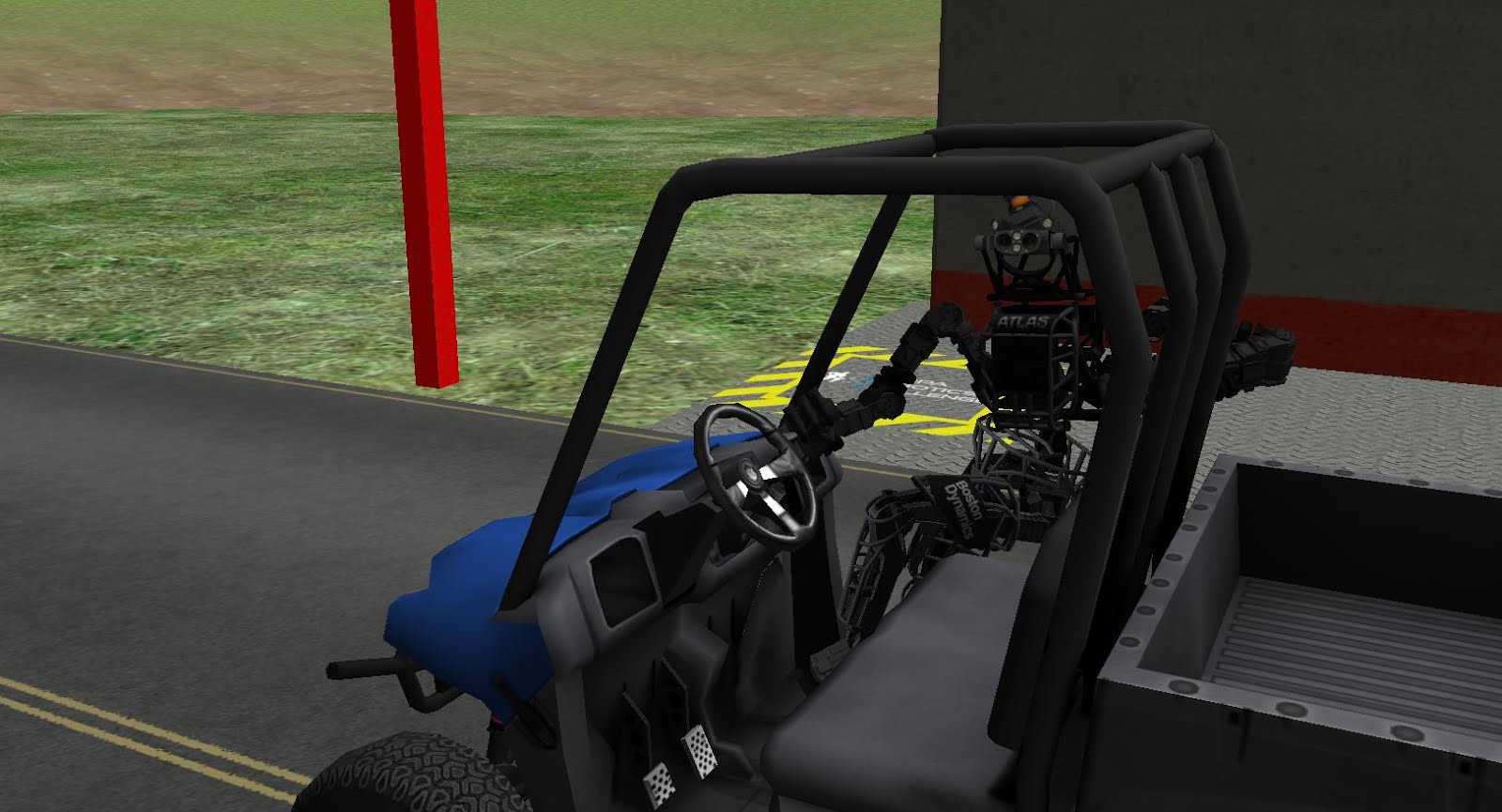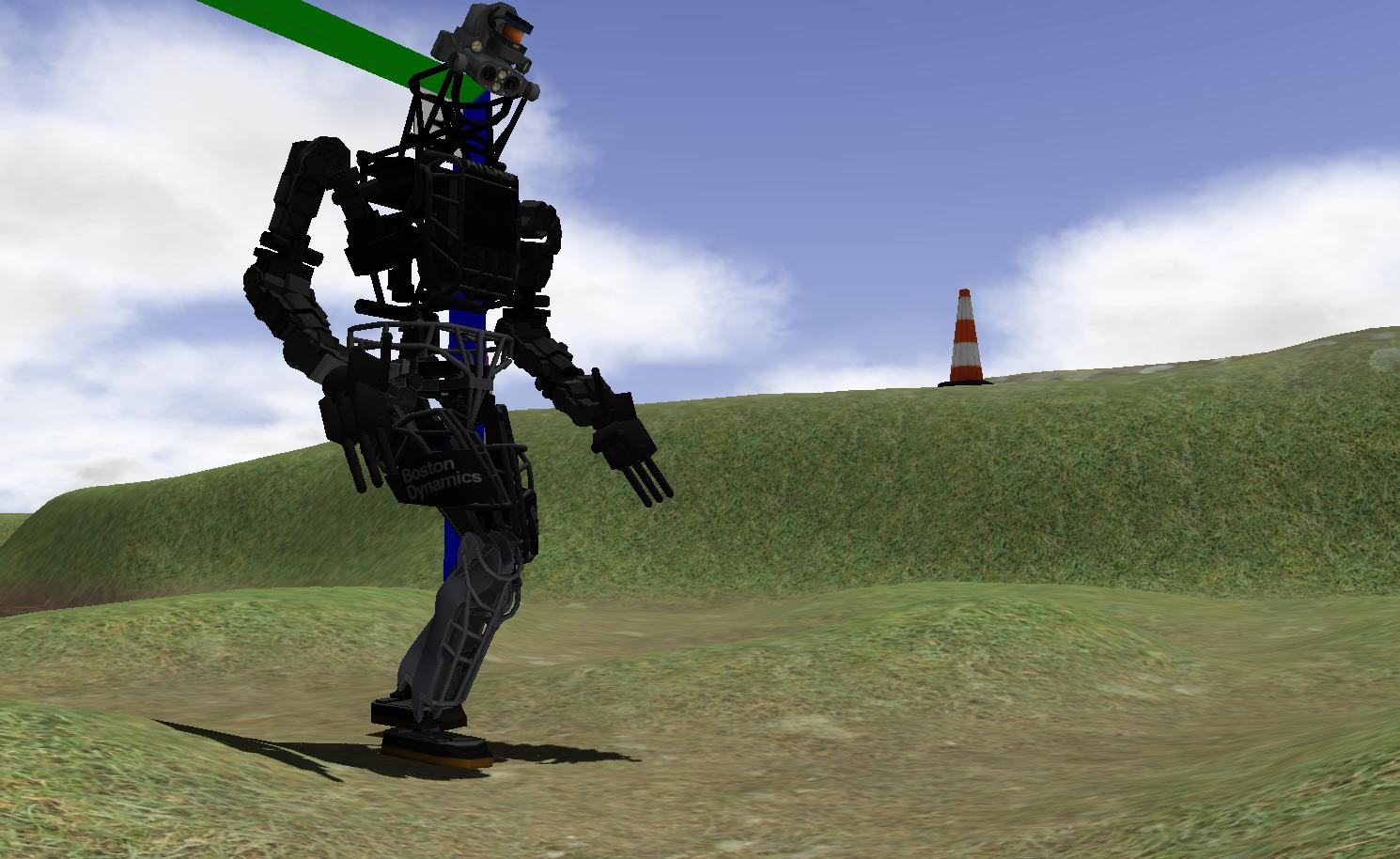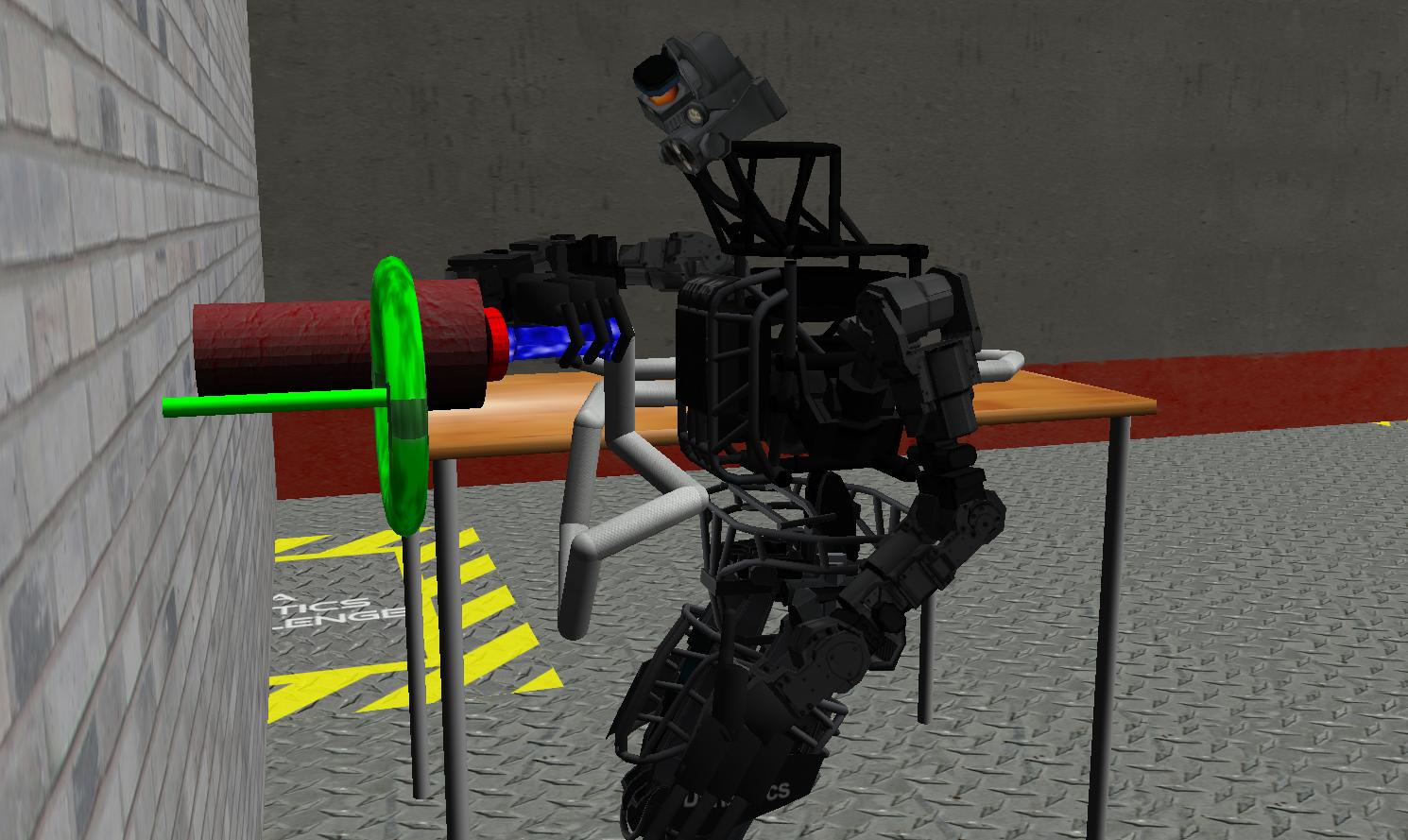Seven software teams ace DARPA’s Virtual Robotics Challenge
July 2, 2013

The first VRC task involved the robot walking to, entering and driving a utility vehicle along a course with obstacles, and then exiting the vehicle and walking through a final checkpoint (credit: DARPA)
The DARPA Robotics Challenge (DRC) was created to spur development of advanced robots that can assist humans in mitigating and recovering from future natural and man-made disasters.
Twenty-six teams from eight countries qualified to compete June 17–21 in the first DRC event, the Virtual Robotics Challenge (VRC).
This was a software competition carried out in a virtual environment that looked like an obstacle course set in a suburban area.
That setting was the first proving ground for testing software that might control successful disaster response robots, and it was the world’s first view into the DARPA Robotics Challenge Simulator, an open-source platform that could revolutionize robotics development.

In the second VRC task, teams had to guide the robot over a series of terrain, including mud, uneven ground and a debris-littered path (credit: DARPA)
Disaster response robots require multiple layers of software to explore and interact with their environments, use tools, maintain balance and communicate with human operators.
In the Virtual Robotics Challenge (VRC), competing teams applied software of their own design to a simulated robot in an attempt to complete a series of tasks that are prerequisites for more complex activities.
The top six teams earned funding and an ATLAS robot from DARPA to compete in the DRC Trials in December 2013.
DARPA is also funding several other “Track A” teams to construct their own robot and compete in the Trials). The Trials are the second of three DRC events, and the first physical competition.

In the third VRC task, the robot had to pick up a hose, connect it to a pipe and turn a valve (credit: DARPA)